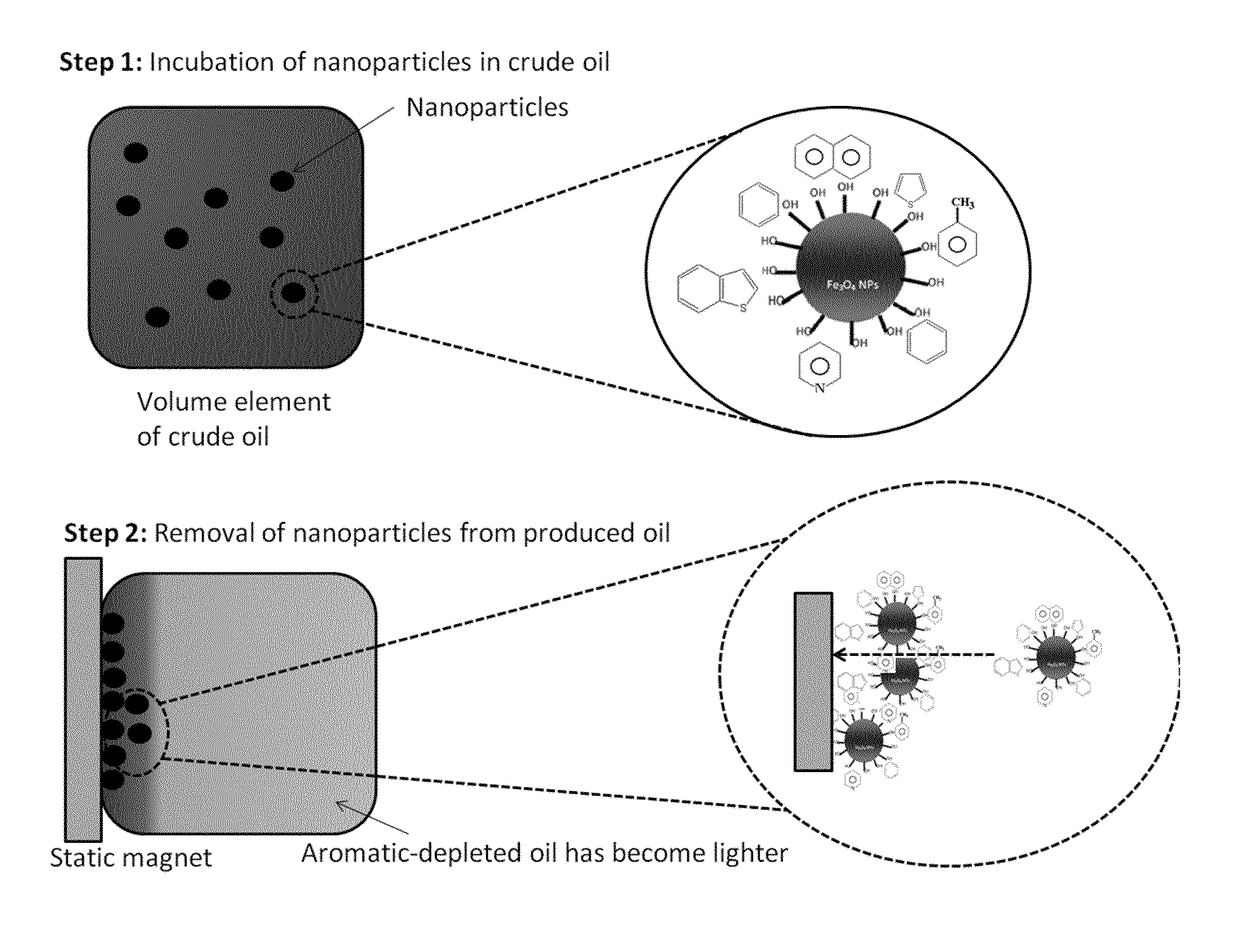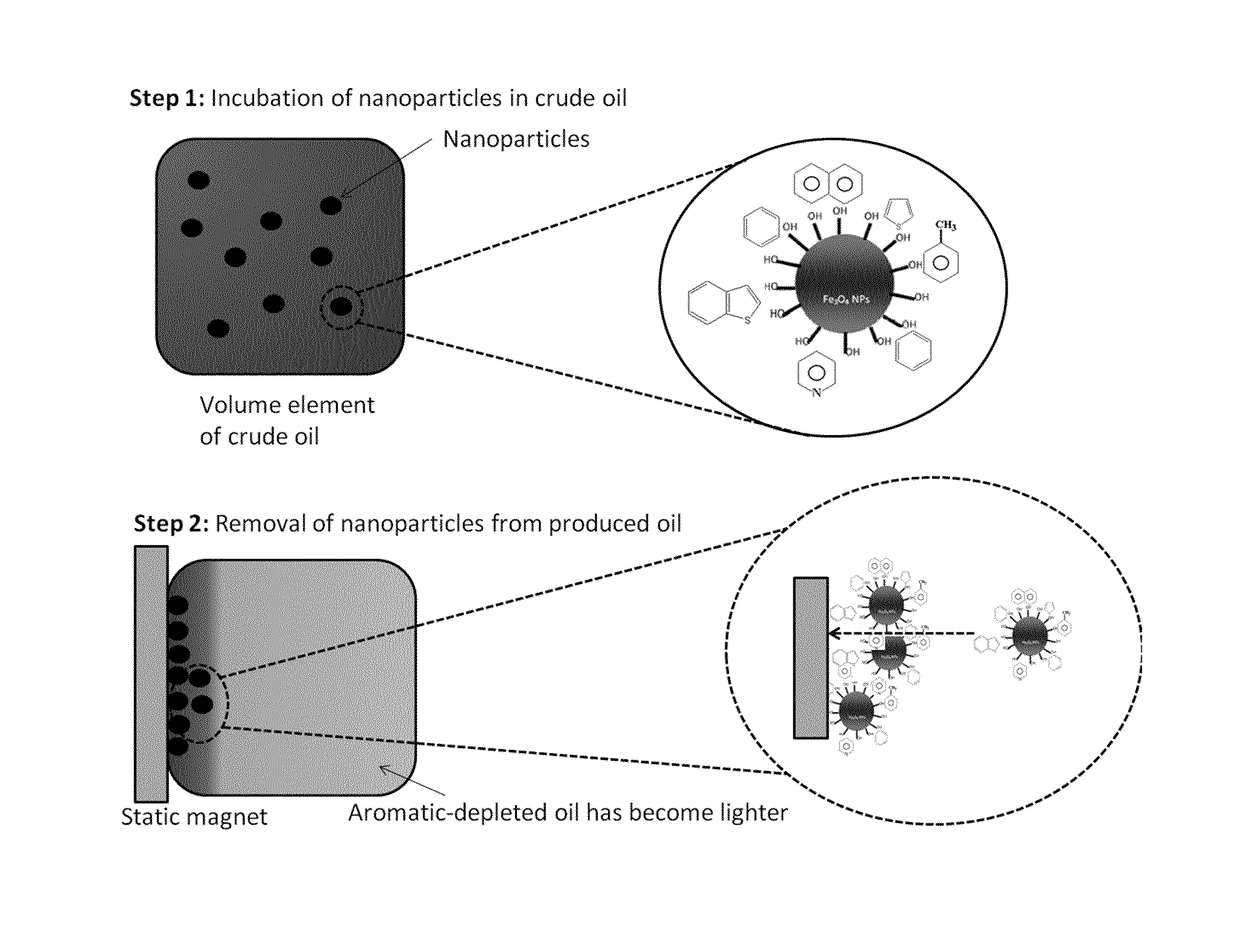Use of magnetic nanoparticles for depletion of aromatic compounds in oil
a technology of aromatic compounds and magnetic nanoparticles, which is applied in the field of use of magnetic nanoparticles for depleting aromatic compounds in oil, can solve the problems of high crude oil viscosity, undesirable aromatic compounds in crude oil, and sulphur reduction, so as to achieve the effect of higher refinery costs
- Summary
- Abstract
- Description
- Claims
- Application Information
AI Technical Summary
Benefits of technology
Problems solved by technology
Method used
Image
Examples
Embodiment Construction
[0051]The present invention departs from phase transitive methods of removal of aromatic hydrocarbons, heteroatomic aromatic compounds and polynuclear aromatic compounds by instead utilizing a novel physi-absorptive method comprising the use of super-paramagnetic nanoparticles comprising chemical functional groups. The present invention departs from other absorptive methods by being selective for aromatic compounds rather than for compounds containing nitrogen or sulfur.
[0052]The term “aromatic” refers to a chemical compound that contains a closed loop of electrons in a ring, most commonly a closed loop of six electrons, having the feature of being diatropic. The term aromatic hydrocarbon is intended to mean simple aromatic compounds such benzene, xylene, toluene . . . to polycyclic aromatic hydrocarbons (PAHs) from naphthalene and 1,2-benzopyrene and their derivatives to asphaltene.
[0053]The terms heteroatomic aromatic compounds and polynuclear aromatic compounds are intended to me...
PUM
| Property | Measurement | Unit |
|---|---|---|
| diameter | aaaaa | aaaaa |
| diameter | aaaaa | aaaaa |
| particle size | aaaaa | aaaaa |
Abstract
Description
Claims
Application Information
 Login to view more
Login to view more - R&D Engineer
- R&D Manager
- IP Professional
- Industry Leading Data Capabilities
- Powerful AI technology
- Patent DNA Extraction
Browse by: Latest US Patents, China's latest patents, Technical Efficacy Thesaurus, Application Domain, Technology Topic.
© 2024 PatSnap. All rights reserved.Legal|Privacy policy|Modern Slavery Act Transparency Statement|Sitemap


